This is a continuation of a series of posts on the Fuji GFX 50S. You should be able to find all the posts about that camera in the Category List on the right sidebar, below the Articles widget. There’s a drop-down menu there that you can use to get to all the posts in this series; just look for “GFX 50S”. This is the fourth post in a series on the Fuji 250 mm f/4 lens for the GFX.
In this post, I looked at the focus shift of the FujiFilm 250 mm f/4 G-mount lens and found it small.
Now I’ll report on using a similar technique to measure the accuracy of the AF-S and AF-C modes of the camera when focused on a static target 5 meters away. Here’s the target:
I selected a focus area the size of the low-contrast target to the left of the ramp and positioned it over that target. I made 16 exposures at each stop in 1/3 stop increments from f/4 through f/11. Exposures were about 1/100 second at ISO 100 wide open and got longer from there. I used the electronic shutter and a Fuji remote release. I waited for focus confirmation before pressing the release button all the way down.
Here is the luminance focus error:
The thick lines are the average shifts, and thin ones mark the values one standard deviation away from the average. The shift in the object field (in front of the tens) is towards the camera as the lens is stopped down. You can see that things go swimmingly until f/9, when the scatter increases dramatically.
Converting that to the size of the circle of confusion (CoC) that would be implied by that amount of focus error:
Let’s take a look at each of the three Adobe RGB (I used JPEG for this testing) color planes, and at the individual samples:
At f/4.5, there was one set of outlier points. At f/9 through f/11, there were two clusters of focused distances.
In AF-C mode:
There’s no funny business at the narrow f-stops, but the spreads are wider than with AF-C. We’ve seen this before.
In terms of the CoC:
Since the pixel pitch of the camera is about 5.3 micrometers, this is pretty darned good focusing.
Let’s look at the color planes and samples:
There appear to be two clusters at f/5 through f/7.
This a good performance, but the clustering is a bit strange.
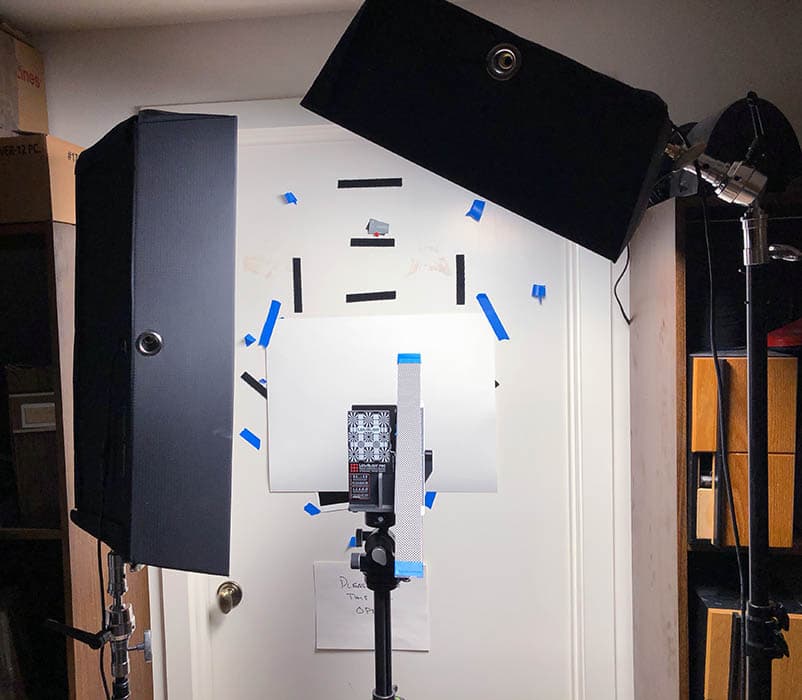
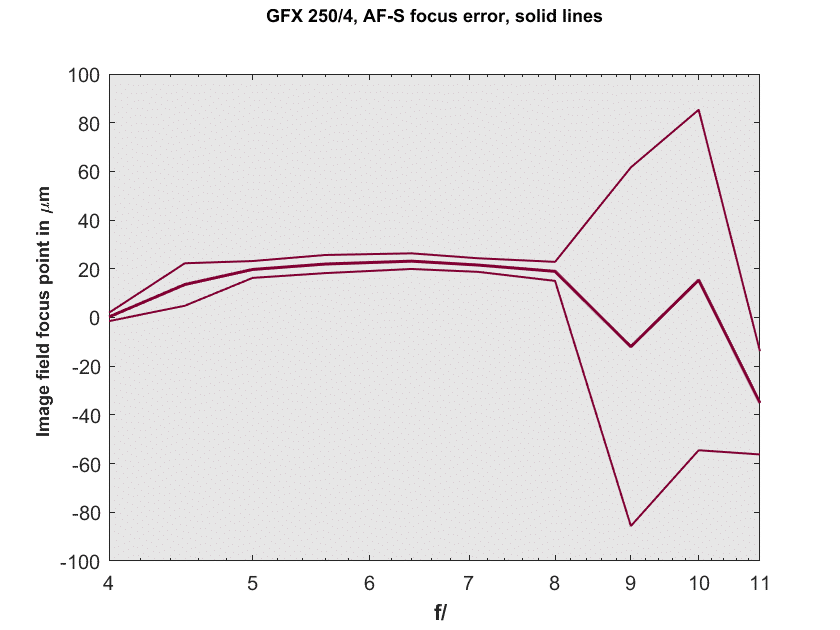
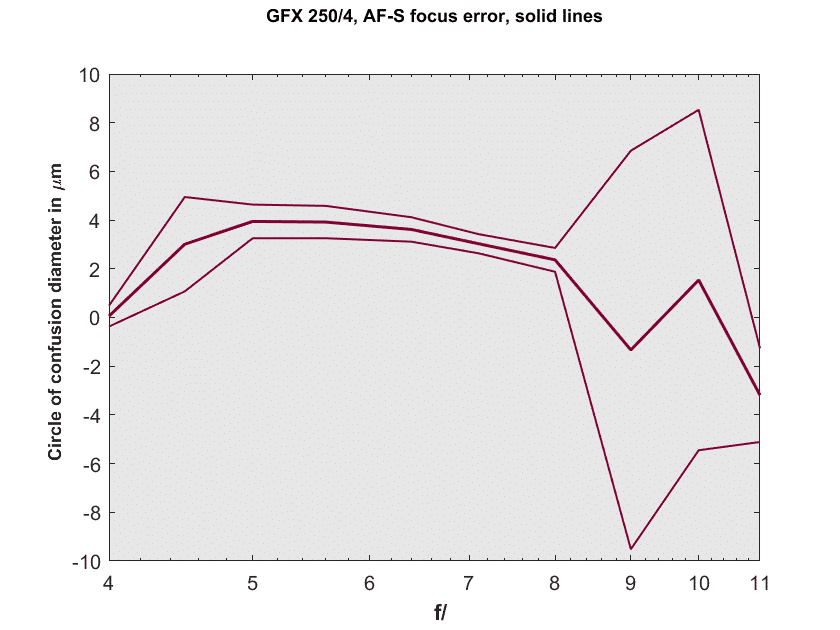
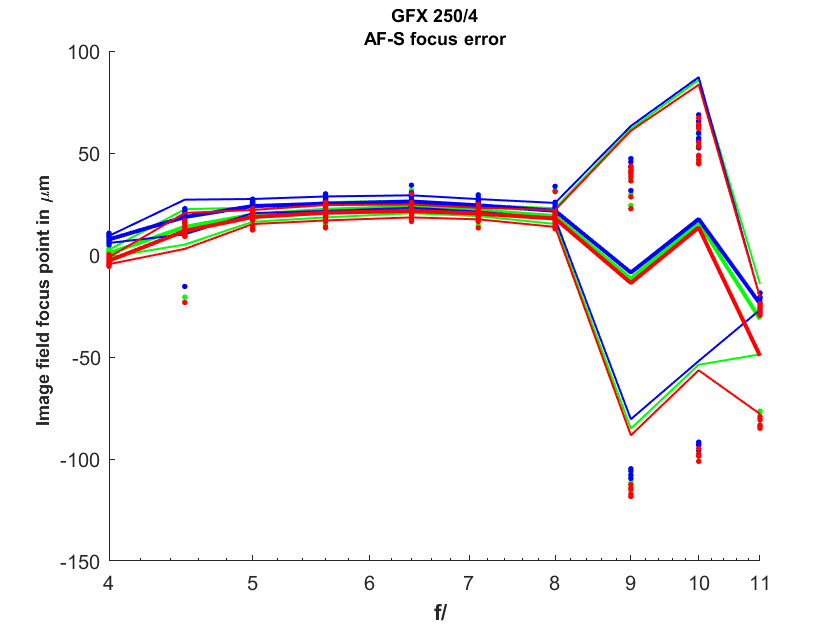
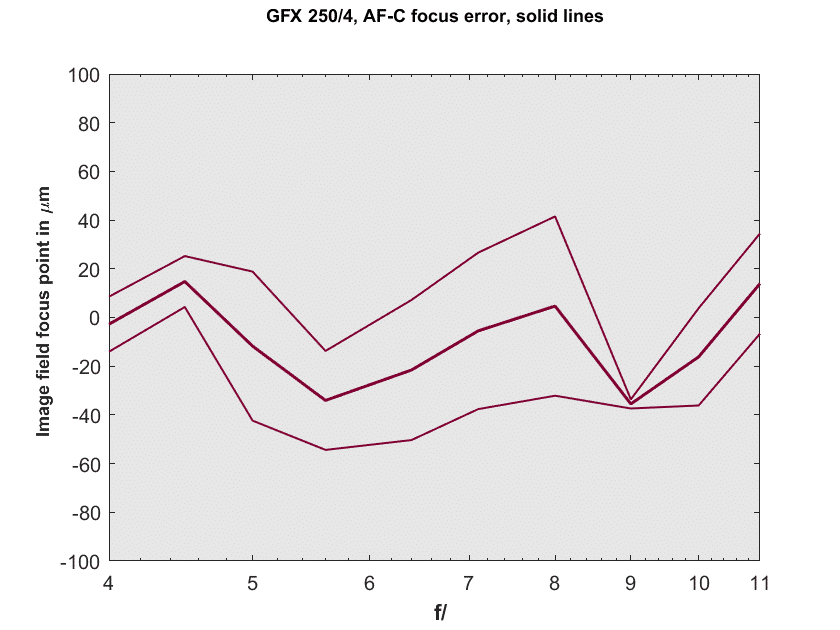
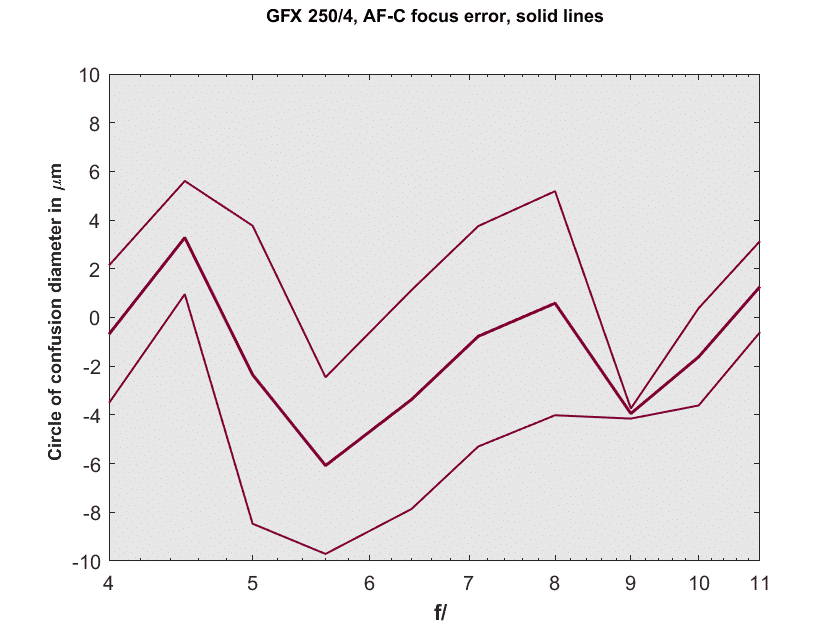
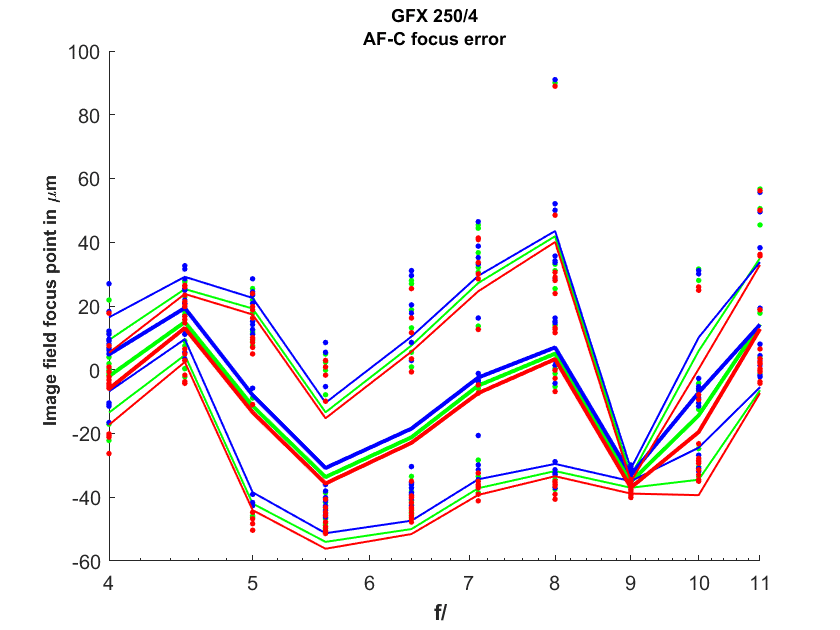
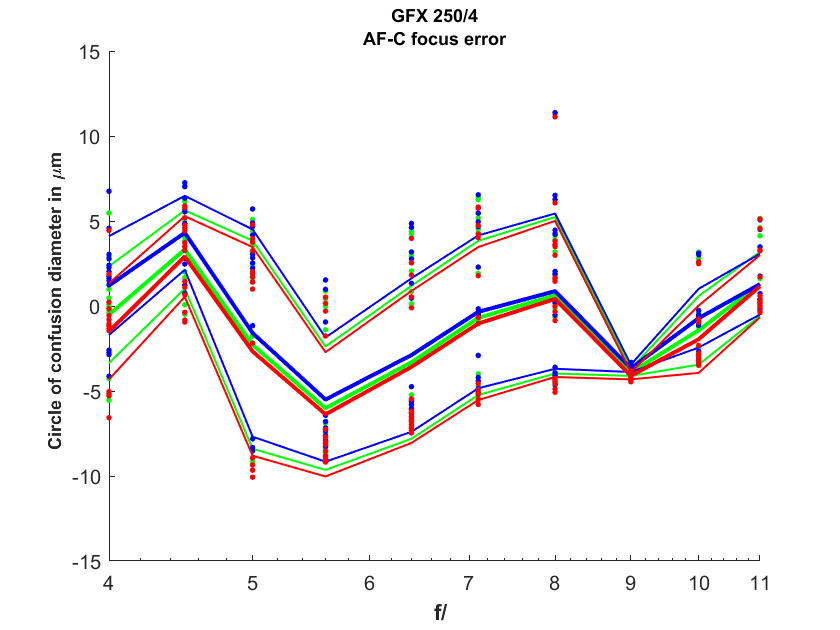
Leave a Reply